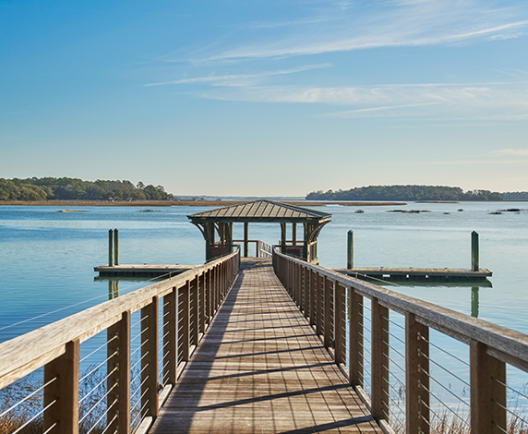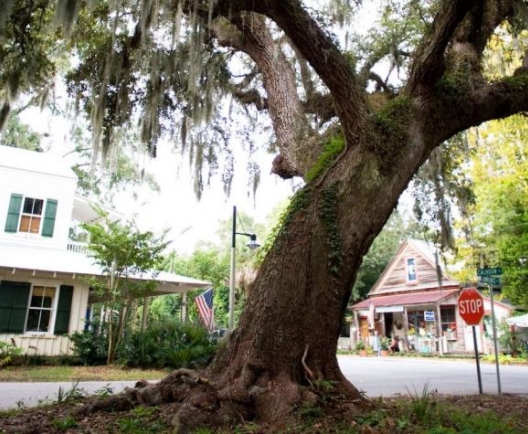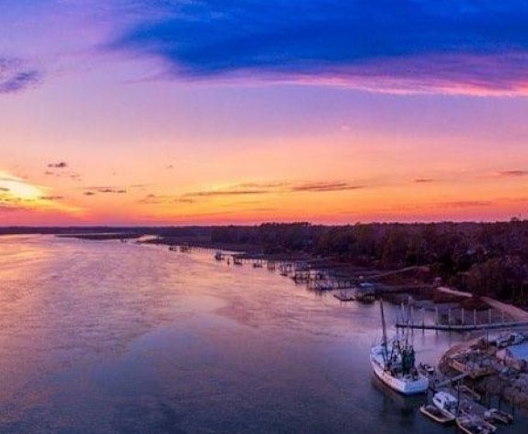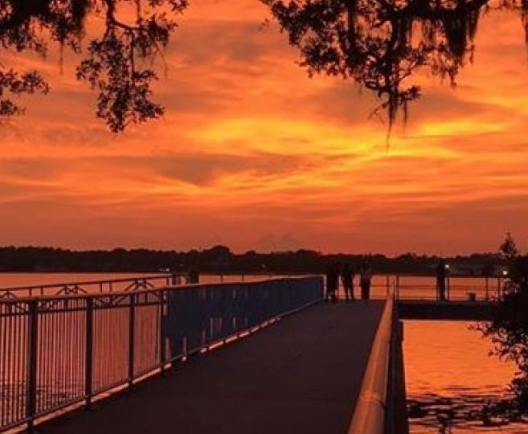Get Road Trip Ready: Plan Your Bluffton Getaway
Located just 25 minutes off I-95, the quaint town of Bluffton, South Carolina, somehow feels like a world away. This picturesque small town on the banks of the May River is positively brimming with history, culture, and authentic Southern charm. Inviting accommodations, boat-to-table dining experiences, and a beautifully preserved Old Town make Bluffton an ideal road-trip destination, with a little something to delight every sort of visitor.
So grab your favorite snacks, buckle up, and set a course for the ultimate open-road adventure to the Heart of the LowcountryTM.

“ALL IN” AT PALMETTO BLUFF’S MUSIC TO YOUR MOUTH
Fall is an awesome time of the year to be in Bluffton, SC! Not only is it the season for oyster roasts and all manner of outdoor activities, when the calendar rolls over to November then it’s time to gear up for Music to Your Mouth (MTYM) at Palmetto Bluff. Attending the Culinary Festival during this week-long event is an honest-to-goodness gift of the highest order, if you are, like me, a foodie.

BLUFFTON – ONE OF FORBES TOP PLACES TO RETIRE
Forbes presented their new list of 25 great places to retire and the Town of Bluffton is one of them. Forbes included Bluffton, South Carolina with this profile:
Bluffton is a coastal village on the Atlantic Ocean in South Carolina’s Low County between Savannah and Hilton Head. It is a rather warm place, with an average high temperature of 76 degrees and an average low of 57 degrees. Bluffton is also wet. It gets 52 inches a year of rain, but no snow. Air quality is good. Doctors per capita are slightly below the national average. The local economy is firm. Bluffton is one of the fastest-growing towns in South Carolina.

BLUFFTON IS A STATE OF MIND
10 minutes east of Hilton Head Island, nestled on the banks of the May River, you’ll find the small Southern town of Bluffton, South Carolina. Bluffton is a place where the locals are friendly, the food is fresh, and the history is rich. The town’s vibrant and quirky spirit runs at different pace than most.
Blufftonians will tell you that Bluffton is more than a place, it’s a state of mind. It only takes one trip to understand what they mean.

BLUFFTON’S BEST: A WEEKEND ITINERARY
Bluffton, South Carolina is known for many things: its southern charm, beautiful views of the May River, history, access to fresh seafood and fine dining, and more! It’s a must-visit destination that will tempt you to visit year after year. While we recommend that you take more than a weekend to really indulge in Bluffton’s history and culture, we understand that sometimes traveling has to be short and sweet.
To ensure that you maximize your weekend in Bluffton, we’ve prepared this simple weekend itinerary for your stay! Get ready to explore Bluffton, Heart of the Lowcountry!

FIRST SIP: SOUTHERN BARREL BREWING CO.
Down here in the Lowcountry, beer was, for many years, served in cans, bottles, on tap and in kegs just like every other part of the country. Beer in a can was referred to as a “cold beer” and the keg was the beverage of choice for many a shrimp boil and oyster roast. The old stand-bys were Pabst Blue Ribbon (PBR), Budweiser, Miller and Schlitz. The most exotic beer we saw was when someone drove back from a trip to Colorado and brought a case or so of Coors. Today you’ll find much more on tap when visiting Bluffton, South Carolina.

